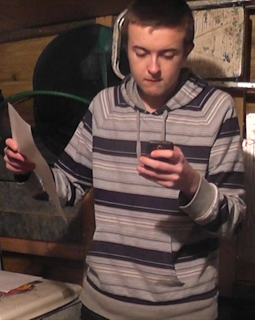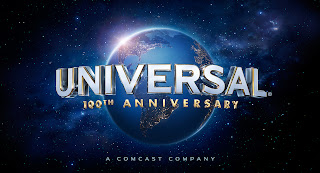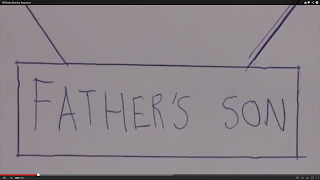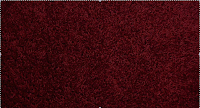G321 Foundation Portfolio - Josh Walker
Friday, 5 April 2013
EVALUATION Q6) What have you learnt about technologies from the process of constructing this product?
TECHNOLOGY USE 1 - RESEARCH

For the majority of the 'research' part of this coursework, I had to use Google to search for websites, such as Wikipedia and Art-of-the-title. Without Google, I would have to find information from library books, which would take a very long time and is very boring.

I used Wikipedia to search for some basic facts about the film industry, which included information about a film's plot, as well as many jobs in the media industry, including marketing and production companies. I also searched Wikipedia to work out what genre of film would be best for me and thanks to it, I believe the information I've included is very effective and it has helped me improve my knowledge on the film industry.

For the 'Art-of-the-title' title sequence task, I had to find an opening sequence of a film with the same genre as mine. There were a wide range of titles to choose film, but for me personally, I chose 'This is England' because it is a very good film and it is a genre of film which is the same as mine (drama). Without Art-of-the-title, it would make this task extremely hard because there is no other site with a speciality of 'opening sequences'.
 'YouTube' was a vital part of this coursework, especially for the analysis on an opening sequence of your choice. I had to watch the opening sequence and write down about the mise-en-scene, sound, camera and editing of that clip. The knowledge on this has made an impact of the cousrwork and throughout Media altogether.
'YouTube' was a vital part of this coursework, especially for the analysis on an opening sequence of your choice. I had to watch the opening sequence and write down about the mise-en-scene, sound, camera and editing of that clip. The knowledge on this has made an impact of the cousrwork and throughout Media altogether.
TECHNOLOGY USE 2 - FILMING AND EDITING

'Final Cut Pro X' was one of the most vital parts of the whole piece of coursework because this software was used to edit the footage that I had filmed. I used so many different methods to make my opening sequence including the 'Blade' tool to shorten each piece of footage filmed, the 'T' tool to add titles to the clip and the 'I, O and F' tools to sort out what parts of the footage I wanted in my opening sequence. Overall, this piece of software has really increased my confidence into editing.
I used this device to record the dialogue I needed for my opening sequence. As I had only piece of dialogue, it wasn't really a hassle and it was very easy to do. I could easily transfer the data from this microphone to 'Final Cut Pro' and is now included in my opening sequence. It was fun and very easy to use.
 For the 'filming' part of the task, I used a 'Full HD Panasonic camcorder' to film all of the camera shots I needed for my opening sequence. This technology was fairly simple to use, although I did have a problem with the battery, as it was on low, which meant that my shooting schedule had to be slightly adjusted to a different time. To film the scenes and the camera shots as professionally as possible, I also used a tripod to adjust the height of each shot, whether I was sat down or stood up. I used this to prevent the camera from shaking and this instrument is better than holding it in your hand. I found using the tripod very easy, as I used it before in my preliminary task and other practical work and I found that my work is very effective after using these equipment.
For the 'filming' part of the task, I used a 'Full HD Panasonic camcorder' to film all of the camera shots I needed for my opening sequence. This technology was fairly simple to use, although I did have a problem with the battery, as it was on low, which meant that my shooting schedule had to be slightly adjusted to a different time. To film the scenes and the camera shots as professionally as possible, I also used a tripod to adjust the height of each shot, whether I was sat down or stood up. I used this to prevent the camera from shaking and this instrument is better than holding it in your hand. I found using the tripod very easy, as I used it before in my preliminary task and other practical work and I found that my work is very effective after using these equipment.
TECHNOLOGY USE 3 - BOTH
To be able to do most of the tasks and to create this blog, I needed to use a Mac or Computer. Typing is much better than writing down, when presenting this work because it's quicker to do and it is more creative and fun. The Mac is also home to a wide range of information I need to research and to complete the tasks set by the tutor.
Blogger was the most frequently used website because this is the place where my blog was written. I learnt a lot while blogging, as this was the first time I've ever blogged and I'm going to consider blogging more in the future. The tutor was so helpful with helping us to blog. This is much better than other methods, such as writing down notes because it is more unique and this tends to be more easier and it can be viewed from all over the internet; around the world.
Finally, Prezi is a website where you can present your work in a more stylish, creative way, similar to Microsoft Powerpoint, but with more room to work on. I've used this on a few task to vary the way I present things, rather than just using Text and Image. I found this very useful and as well as Blogger, I will consider using it in the future, whether at university or just bored in my free time.
In my opinion, without technology, I would present my information in a less creative and boring way. The Internet and technology, in general, is open to a wide range of ideas.
EVALUATION Q5) How did you attract/address your audience?
For this task, I've added annotations to tell you about how my film contributes to the target audience of my film. I will refer to genre conventions, use of music and what I have identified as the USP of my imaginary film.
Here it is:
Here it is:
EVALUATION Q4) Who would be the audience for your media product?
For my media product, I have established, over a heck of a load of blogs, that the audience of my film would be 45-54 year old women because they are the most likely age range/gender to go and watch a drama film, whether if it's historical or romantic.
As this chart shows from the 'Statistical Yearbook 2012' by the BFI, we can see that the 45-54 year old age range would go to see films that are based on an historical event through drama, mystery or even action. However, the 'Age group % of the film's total audience' is below a fifth of all of the whole audience of the film because the typical age range are least likely to go to the cinema to watch a film and are more likely to buy it on DVD and watch it on the television. Our age range is known as a niche audience. As this is an independent film, the target audience would be able to receive word-of-mouth through film festivals, which helps the target audience to raise awareness and obtain donations for funding in future projects.
What sort of media would the '45-54' age range consume?
 When talking about the use of media for 45-54 year olds, the way they consume different types of media is somewhat very different compared to a teenagers consumption. They tend to consume newspapers, such as the Daily Telegraph, the Times and the Independent, as well as magazines, such as What's on TV, Chat and Take a Break. People of these ages are more likely to listen to the radio also, with radio stations including Magic, BBC Radio's 3 and 4 and Heart FM. Finally, they would watch TV such as Coronation Street, Long Lost Family and historical dramas such as Downton Abbey and Mr Selfridge, as well as sometimes using Facebook.
When talking about the use of media for 45-54 year olds, the way they consume different types of media is somewhat very different compared to a teenagers consumption. They tend to consume newspapers, such as the Daily Telegraph, the Times and the Independent, as well as magazines, such as What's on TV, Chat and Take a Break. People of these ages are more likely to listen to the radio also, with radio stations including Magic, BBC Radio's 3 and 4 and Heart FM. Finally, they would watch TV such as Coronation Street, Long Lost Family and historical dramas such as Downton Abbey and Mr Selfridge, as well as sometimes using Facebook.
 The reason for this consumption is because they want to explore certain ideas they haven't explored before and to gain capacity for judgment, free-thinking, questioning and understanding of their interests. They want to form on-screen relationships with characters, as well as gaining information about them in newspapers and magazines alike. The typical age range tend to consume media in a resilient way, examples include to be entertained by different sources of technology and to decrease boredom.
The reason for this consumption is because they want to explore certain ideas they haven't explored before and to gain capacity for judgment, free-thinking, questioning and understanding of their interests. They want to form on-screen relationships with characters, as well as gaining information about them in newspapers and magazines alike. The typical age range tend to consume media in a resilient way, examples include to be entertained by different sources of technology and to decrease boredom.
As this chart shows from the 'Statistical Yearbook 2012' by the BFI, we can see that the 45-54 year old age range would go to see films that are based on an historical event through drama, mystery or even action. However, the 'Age group % of the film's total audience' is below a fifth of all of the whole audience of the film because the typical age range are least likely to go to the cinema to watch a film and are more likely to buy it on DVD and watch it on the television. Our age range is known as a niche audience. As this is an independent film, the target audience would be able to receive word-of-mouth through film festivals, which helps the target audience to raise awareness and obtain donations for funding in future projects.
What sort of media would the '45-54' age range consume?
 When talking about the use of media for 45-54 year olds, the way they consume different types of media is somewhat very different compared to a teenagers consumption. They tend to consume newspapers, such as the Daily Telegraph, the Times and the Independent, as well as magazines, such as What's on TV, Chat and Take a Break. People of these ages are more likely to listen to the radio also, with radio stations including Magic, BBC Radio's 3 and 4 and Heart FM. Finally, they would watch TV such as Coronation Street, Long Lost Family and historical dramas such as Downton Abbey and Mr Selfridge, as well as sometimes using Facebook.
When talking about the use of media for 45-54 year olds, the way they consume different types of media is somewhat very different compared to a teenagers consumption. They tend to consume newspapers, such as the Daily Telegraph, the Times and the Independent, as well as magazines, such as What's on TV, Chat and Take a Break. People of these ages are more likely to listen to the radio also, with radio stations including Magic, BBC Radio's 3 and 4 and Heart FM. Finally, they would watch TV such as Coronation Street, Long Lost Family and historical dramas such as Downton Abbey and Mr Selfridge, as well as sometimes using Facebook.  The reason for this consumption is because they want to explore certain ideas they haven't explored before and to gain capacity for judgment, free-thinking, questioning and understanding of their interests. They want to form on-screen relationships with characters, as well as gaining information about them in newspapers and magazines alike. The typical age range tend to consume media in a resilient way, examples include to be entertained by different sources of technology and to decrease boredom.
The reason for this consumption is because they want to explore certain ideas they haven't explored before and to gain capacity for judgment, free-thinking, questioning and understanding of their interests. They want to form on-screen relationships with characters, as well as gaining information about them in newspapers and magazines alike. The typical age range tend to consume media in a resilient way, examples include to be entertained by different sources of technology and to decrease boredom.EVALUATION Q3) What kind of media institution might distribute your media product and why?
For this task, I've decided to use 'Prezi' because I can present this question better using a different source of technology and it hasn't been used a lot on this blog.
So here goes:
So here goes:
EVALUATION Q2) How does your media product represent particular social groups?
In this question, I will be talking about my character and comparing it with another character from a film, which has similar features by their personality and dress sense.
As there is only 1 character from my opening sequence, I won't need to talk about the different personalities of another character in my film.

The main character of this film is Joshua Staples, a shy, young man, who portrays himself as a loving, caring person. He is an only child and lives with his mum, as his dad split up with her, while she was pregnant with Josh. His dad moved away from the UK and has never came back to see his son.
For this task, I am comparing Joshua with 'Eastenders' regular character Arthur 'Fatboy' Chubbs because I believe he has a similar personality to my main character of the film's opening sequence. First of all, both of the characters are wearing hoodies, suggesting to some people that they may be threatening to the public. But, on the other hand, they have a completely different, more caring side to them, as most people would describe hooded people as scary or nasty people. They both have a special relationship with another person (Josh with his father and Fatboy with his girlfriend). These two characters are portrayed not as bad or humiliating, but as popular, soft hearted characters, which is a similarity.
They are both of similar age (late teens or early 20s) suggesting that their style are similar to a teenagers style, especially their clothing. Their hair is also short, referring back to a chav or a gangsta's sense of style as they tend to have short hair. With 'Fatboy', his speech is more informal and tends to talk like a teenager ('Bruv' and 'Innit' are 2 clear examples of the words the character uses in Eastenders). These features are not seen in my film, as my character portrays himself as independent and prefers to be on his own.
As there is only 1 character from my opening sequence, I won't need to talk about the different personalities of another character in my film.

The main character of this film is Joshua Staples, a shy, young man, who portrays himself as a loving, caring person. He is an only child and lives with his mum, as his dad split up with her, while she was pregnant with Josh. His dad moved away from the UK and has never came back to see his son.
For this task, I am comparing Joshua with 'Eastenders' regular character Arthur 'Fatboy' Chubbs because I believe he has a similar personality to my main character of the film's opening sequence. First of all, both of the characters are wearing hoodies, suggesting to some people that they may be threatening to the public. But, on the other hand, they have a completely different, more caring side to them, as most people would describe hooded people as scary or nasty people. They both have a special relationship with another person (Josh with his father and Fatboy with his girlfriend). These two characters are portrayed not as bad or humiliating, but as popular, soft hearted characters, which is a similarity.
They are both of similar age (late teens or early 20s) suggesting that their style are similar to a teenagers style, especially their clothing. Their hair is also short, referring back to a chav or a gangsta's sense of style as they tend to have short hair. With 'Fatboy', his speech is more informal and tends to talk like a teenager ('Bruv' and 'Innit' are 2 clear examples of the words the character uses in Eastenders). These features are not seen in my film, as my character portrays himself as independent and prefers to be on his own.
Sunday, 24 March 2013
EVALUATION Q1) In what ways does your media product use, develop or challenge forms and conventions of real media products?
As shown above, I will be using these 9 frames to compare different elements of media (Mise-en-scene, Sound etc.) to a film of a similar genre to mine. I believe that my media product successfully matches and also challenges forms and conventions. I've included elements of both a romantic and drama film, as my product involves both of these genres, as it is aimed to be a 'romantic-drama'. This film portrays romance in a different, more unique way to other romantic-dramas, as this is based on more family-related stuff, rather than a love story between a couple.
I will also explore how I did certain elements of my film's opening sequence and compare them with other films with a similar opening storyline and titles.
Film Ident:
 Both mine and the professional film ident 'Universal Pictures' have very similar features. First of all, the setting of both of these idents are in the same place, but focuses on different planets. Both of the idents also include more information about the company of which the ident comes from and are adopted by. Mine is 'Walker Pictures Entertainment' and Universal's is 'Comcast'.
Both mine and the professional film ident 'Universal Pictures' have very similar features. First of all, the setting of both of these idents are in the same place, but focuses on different planets. Both of the idents also include more information about the company of which the ident comes from and are adopted by. Mine is 'Walker Pictures Entertainment' and Universal's is 'Comcast'. However, there are some differences, including the fonts. I have used a somewhat 2D font, whereas 'Universal' had more time to work on the font of their ident and so it looks 3D and more stood out. 'Universal' has used the colour scheme Yellow and White, whereas mine is just pure white.
Main Film Title:


Both the professional titles of 'Napoleon Dynamite' and my own titles have both constructed that they have been done by hand and have not used titles from a particular program to show the titles. We have also used the right colour font to be shown on an appropriate background e.g. dark writing on a light background or the opposite. This has been constructed well and the titles can easily be identified because of this technique. The titles both appear near the start of the opening sequence, which is a similarity and probably to other drama films.
Setting/Location:
In my opening sequence for 'Father's Son', the setting is easily identified after the above-the-line talent credits are shown. The setting is shown in a wide range of camera shots, especially with the long shot. The whole part of a long shot is to show the whole character (top to toe) and also to identify the scene.


In 'Napoleon Dynamite' however, the setting and location is not fully identified. The only thing you see, as well as the titles, are different colored and materialized carpets, suggesting that the film's opening sequence is set in a living room, but the audience do not know that.
Camera/Editing:
There is a big difference between my final cut and 'Napoleon Dynamite'. In my opening sequence, I've used a range of continuity editing, such as jump cut and eye-line match, whereas in 'Napoleon Dynamite', there is only one piece of continuity (jump cut) between each carpets shown. As well as this, 'Napoleon Dynamite' has also used just one camera shot throughout, whereas in my opening sequence, I've used a wide range of camera shots to tell the story of my film. Two of these examples are the close-ups, when showing the character's reaction from reading the letter and his dad's number on the phone and also the point-of-view shots, when the protagonist is looking at the main props of the film's opening sequence. This creates effect for the viewer, by understanding the plot more clearly.
Title Font and Style:
 When looking at these 2 film's use of titles in their opening sequence (mine above and 'Napoleon Dynamite' below) we can see some similarities. The titles are near enough positioned in the same place (right in the centre of the screen) but the fonts look a little bit different. The titles are both hand-written, which is a similarity. The way it is written is both linked to a character or object ('Fathers Son' uses written text to refer to the font of the letter, which is a key prop for the film and 'Napoleon Dynamite' uses written text to refer back to the main character, who daydreams his way through school and draws ligers and other fantasy creatures). The titles in 'Napoleon Dynamite' appears almost in the same order as my film's opening sequence, with most of the title's hand-written on paper or doodling the plate using different creams and sauces etc.
When looking at these 2 film's use of titles in their opening sequence (mine above and 'Napoleon Dynamite' below) we can see some similarities. The titles are near enough positioned in the same place (right in the centre of the screen) but the fonts look a little bit different. The titles are both hand-written, which is a similarity. The way it is written is both linked to a character or object ('Fathers Son' uses written text to refer to the font of the letter, which is a key prop for the film and 'Napoleon Dynamite' uses written text to refer back to the main character, who daydreams his way through school and draws ligers and other fantasy creatures). The titles in 'Napoleon Dynamite' appears almost in the same order as my film's opening sequence, with most of the title's hand-written on paper or doodling the plate using different creams and sauces etc.
Subscribe to:
Comments (Atom)












